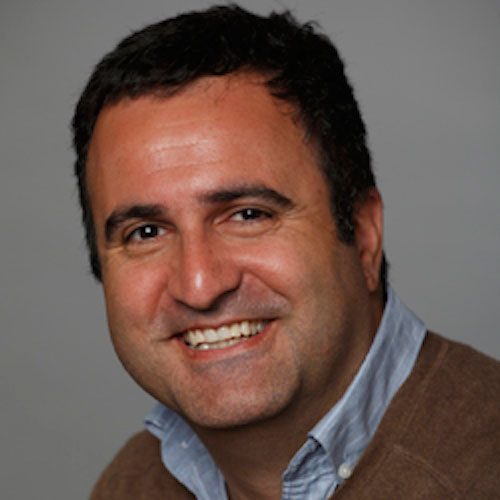Benjamin Lok is a Professor in the Computer and Information Sciences and Engineering Department at the University of Florida and co-founder of Shadow Health, Inc., an education company. His research focuses on virtual humans and mixed reality in the areas of virtual environments, human-computer interaction, and computer graphics. Professor Lok received a Ph.D. (2002, advisor: Dr. Frederick P. Brooks, Jr.) and M.S. (1999) from the University of North Carolina at Chapel Hill, and a B.S. in Computer Science (1997) from the University of Tulsa. He did a post-doc fellowship (2003) under Dr. Larry F. Hodges.
Professor Lok received a UF Term Professorship (2017-2020), the Herbert Wertheim College of Engineering Faculty Mentoring Award (2016), a NSF Career Award (2007-2012), and the UF ACM CISE Teacher of the Year Award in 2005-2006. He and his students in the Virtual Experiences Research Group have received Best Paper Awards at ACM I3D (Top 3, 2003) and IEEE VR (2008). He currently serves as the chair of the Steering Committee of the IEEE Virtual Reality conference. He has been the general co-chair of IEEE VR 2014 and IEEE VR 2013, and program co-chaired the ACM VRST 2009, IEEE Virtual Reality 2010, and IEEE Virtual Reality 2011 conferences. Professor Lok is an associate editor of Computer and Graphics, and ACM Computing Surveys.
Douglas Lanman is the Director of Computational Imaging at Oculus Research, where he leads investigations into advanced display and imaging technologies. His prior research has focused on head-mounted displays, glasses-free 3D displays, light field cameras, and active illumination for 3D reconstruction and interaction. He received a B.S. in Applied Physics with Honors from Caltech in 2002 and M.S. and Ph.D. degrees in Electrical Engineering from Brown University in 2006 and 2010, respectively. He was a Senior Research Scientist at NVIDIA Research from 2012 to 2014, a Postdoctoral Associate at the MIT Media Lab from 2010 to 2012, and an Assistant Research Staff Member at MIT Lincoln Laboratory from 2002 to 2005.
Jeremy Bailenson is founding director of Stanford University’s Virtual Human Interaction Lab, Thomas More Storke Professor in the Department of Communication, Professor (by courtesy) of Education, Professor (by courtesy) Program in Symbolic Systems, a Senior Fellow at the Woods Institute for the Environment, and a Faculty Leader at Stanford’s Center for Longevity. He earned a B.A. cum laude from the University of Michigan in 1994 and a Ph.D. in cognitive psychology from Northwestern University in 1999. He spent four years at the University of California, Santa Barbara as a Post-Doctoral Fellow and then an Assistant Research Professor.
Bailenson studies the psychology of Virtual and Augmented Reality, in particular how virtual experiences lead to changes in perceptions of self and others. His lab builds and studies systems that allow people to meet in virtual space, and explores the changes in the nature of social interaction. His most recent research focuses on how virtual experiences can transform education, environmental conservation, empathy, and health. He is the recipient of the Dean’s Award for Distinguished Teaching at Stanford.
Paul Debevec (Ph.D. UC Berkeley 1996) works at the intersection of Computer Vision and Computer Graphics as a Senior Researcher at Google Daydream and an Adjunct Research Professor at the University of Southern California's Institute for Creative Technologies. He received SIGGRAPH's first Significant New Researcher Award in 2001 for his contributions to image-based modeling and rendering, a Scientific and Engineering Academy Award in 2010 for his contributions to the Light Stage facial capture systems used in films such as Spider-Man 2, Avatar, and Blade Runner: 2049, and the SMPTE Progress Medal in 2017 for his pioneering work in high dynamic range imaging and techniques for illuminating computer-generated objects based on measurement of real-world illumination. He recently served as Vice President for ACM SIGGRAPH and co-chairs the Academy of Motion Picture Arts and Sciences’ Science and Technology Council.
Gordon Stoll is an engineer working on virtual reality at Valve. He helped to develop the technology behind the "Room" demo, the HTC Vive, and Valve's SteamVR tracking ("Lighthouse"). Lately he's mostly been figuring out how to measure things. He developed the methods used to calibrate and test the HMD optics and the tracking basestations. Earlier on in the project, he developed their first-generation sensor fusion filter.

Cassidy Curtis has worked in computer animation for three decades, in many corners of the field. As a math major (and art minor) from Brown University, he got his start developing image processing and particle systems, and animating TV commercials at R/Greenberg, Xaos, and PDI. He was a researcher and instructor in UW’s GRAIL lab, exploring non-photorealistic rendering (Computer Generated Watercolor and Loose and Sketchy Animation) and teaching an early iteration of the Capstone Animation class. At DreamWorks Animation he rigged characters for Shrek, and then animated them on films from Madagascar to How to Train Your Dragon (on which he co-supervised the main character, Toothless.) In 2015, he jumped into real-time graphics and immersive storytelling, joining Google Spotlight Stories to develop the non-photorealistic look of Patrick Osborne’s Oscar-nominated and Emmy-winning short Pearl, and has continued on to work on Jorge Gutierrez’ Emmy-nominated Son of Jaguar and John Kahrs’ Age of Sail, which recently premiered at the 2018 Venice Film Festival.
Shahram Izadi is CTO and co-founder of perceptiveIO a new bay area research and development lab specializing in real-time computer vision and machine learning techniques for mixed reality and interaction. Previously he was a partner researcher and research manager at Microsoft Research (Redmond) for 11 years where he led the interactive 3D technologies (I3D) group. This was an extremely multi-discipline group, which straddles many boundaries including human-computer interaction, augmented reality, applied computer vision and graphics, electronics, signal processing, and optics.
His research focuses on building new technologies and systems that blur the boundaries between real and virtual interaction. This typically involves building new types of depth cameras, sensors or displays; creating practical algorithms and techniques for these types of novel technologies; as well as designing new user experiences that are enabled through this technical research.









